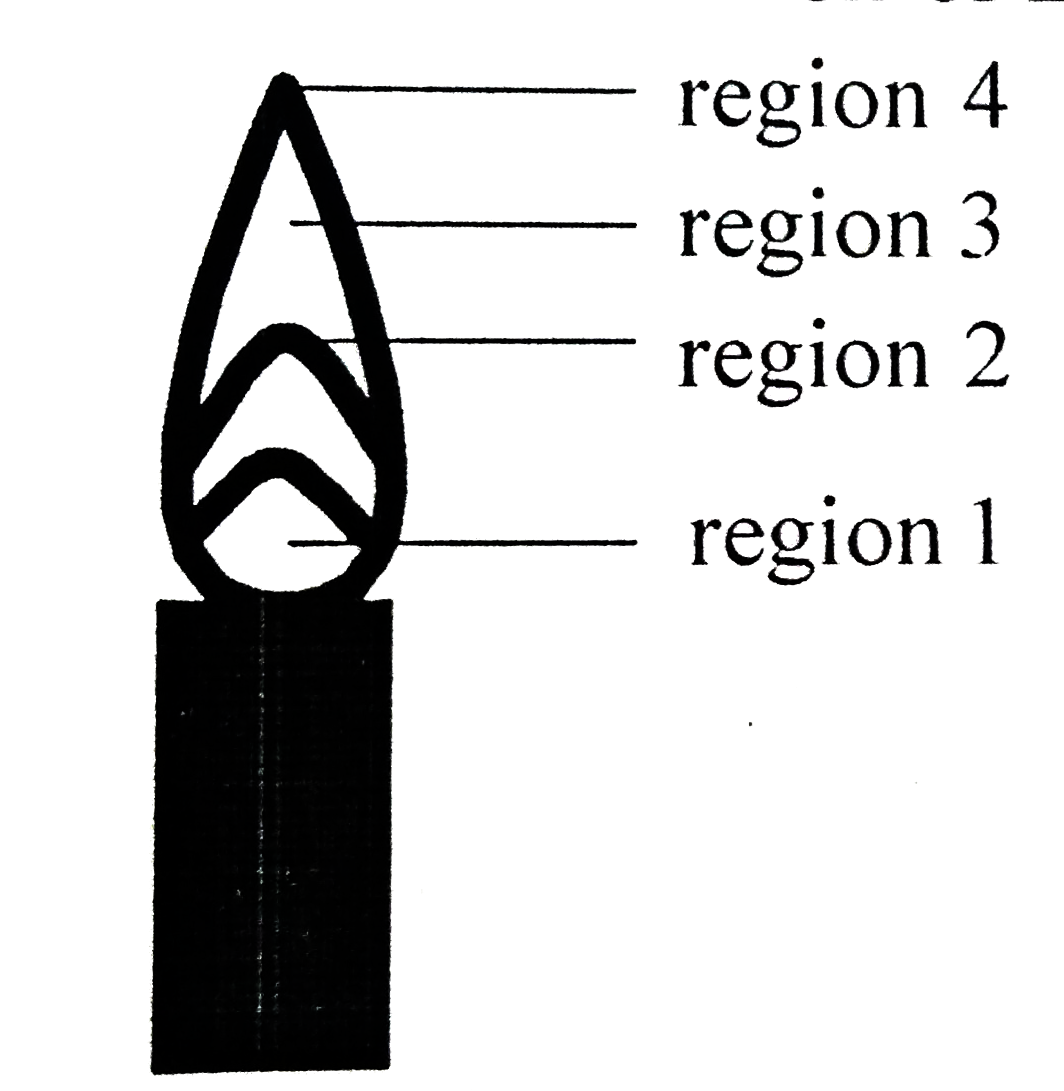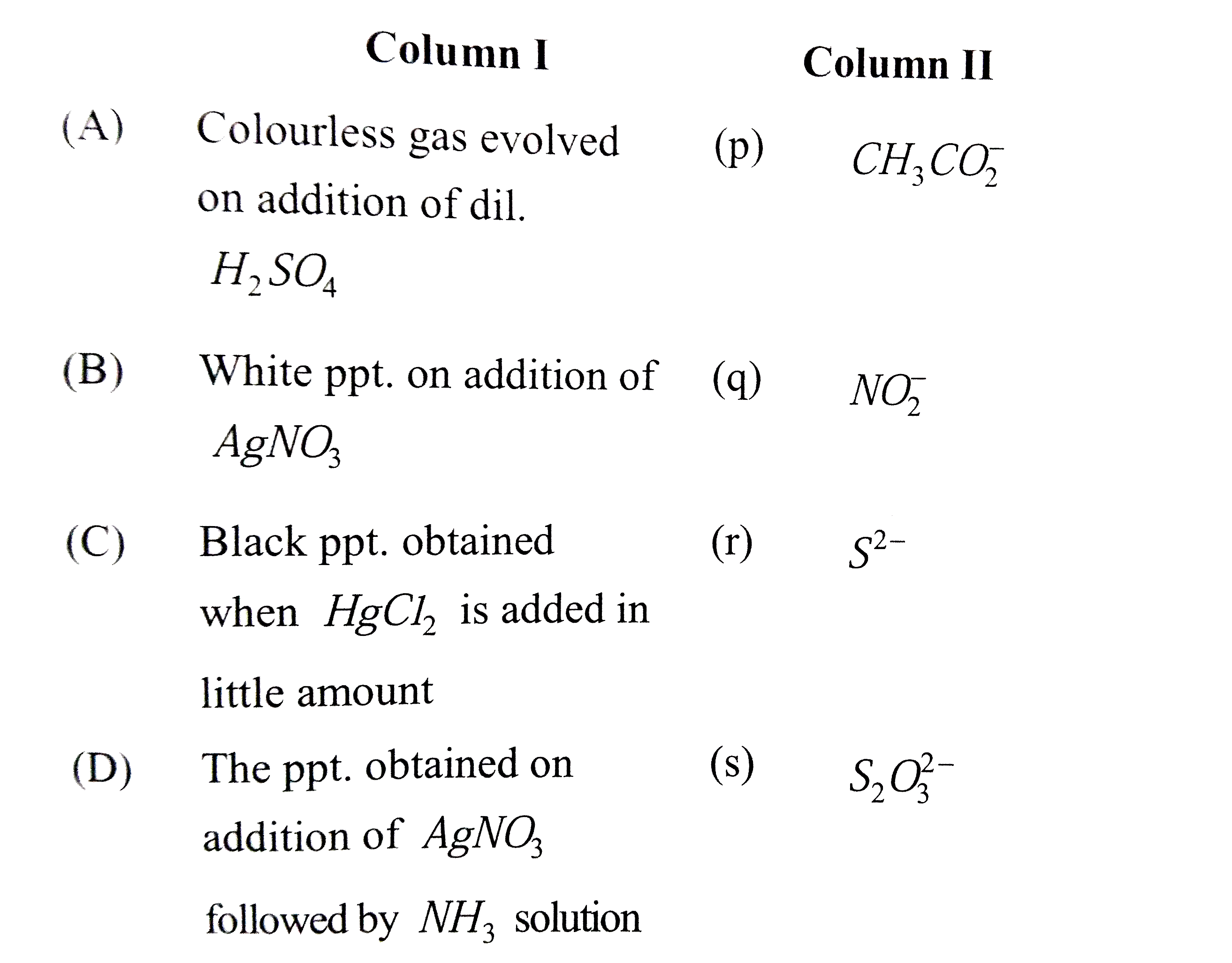Complete Solutions to JEE Section (Only One Choice Answer) of chapter ANALYTICAL CHEMISTRY of Class 12 book with complete answers and questions
| Class 12 | CHEMISTRY |
| Chapter | ANALYTICAL CHEMISTRY |
| ERRORLESS | JEE Section (Only One Choice Answer) |
| Number Of Questions | 36 |
| Academic Year | 2023-24 |
A black sulphide is formed by the action of `H_(2)S` on
01:33View SolutionThe ion that cannot be precipitated by both HCl and `H_2 S` is
01:49View SolutionWhich one among the following pairs of ions cannot be separated by `H_(2)S` in dilute hydrochloric acid ?
01:41View SolutionWhen conc. `H_2 SO_4` is added to dry `KNO_3` brown fumes evolve. These fumes are of
01:35View SolutionWhat product is formed by mixing the solution of `K_4 [Fe (CN)_6]` with the solution of `FeCl_2`?
01:12View SolutionThe aqueous solution of the following salts will be coloured in the case of
02:17View SolutionThe reagents, `NH_(4)Cl` and aqueous `NH_(3)` will precipitate
01:26View SolutionA substance on treatment with dilute `H_(2)SO_(4)` liberates a colourless gas which produces `(I)` turbidity with baryta water and `(ii)` turns acidified dichromate solution green. The reaction indicates the presence of `:`
02:31View SolutionAn aqueous solution containing `Hg^(2+),Hg_(2)^(2+),Pb^(2+)` and `Cd^(2+)` ions will give precipitate of `_______` with dil. HCl
04:18View SolutionSodium nitroprusside, when added to an alkaline solution of sulphide ions, produces purple colour ion due to the formation off
02:08View SolutionWhich one of the following anions is not easily removed from aqueous solutions by precipitation
01:39View SolutionWhich compound does not dissolve in hot dilute `HNO_(3)` ?
00:52View SolutionAn aqueous solution of `FeSO_(4)*Al_(2)(SO_(4))_(3)` and chromium alum is heated with excess of `Na_(2)O_(2)` and filtered. The material obtained are:
03:43View SolutionThe only cations present in the slightly acidic solution are `Fe^(3+),Zn^(2+) and Cu^(2+)`. The reagent that when added in exess to this solution would identify and separate `Fe^(3+)` in one step is:
03:38View SolutionIn the standardization of `Na_(2)S_(2)O_(3)` using `K_(2)Cr_(2)O_(7)` by iodometry, th equivalent weight of `K_(2)Cr_(2)O` is
03:44View SolutionIdentify the correct order of solubility of `Na_(2)S,CuS` and ZnS in aqueous solution
03:18View SolutionAn aqueous solution of a substance gives a white precipitate on treatment with dilute hydrochloric acid, which dissolves on heating. When hydrogen sulphide is passed through the hot acidic solution, a black precipitate is obtained. The substance is a
01:18View SolutionA gas X is passed through water to form a saturated solution. The aqueous solution on treatment with silver nitrate gives a white precipitate. The saturated aqueous solution also dissolves magnesium ribbon with evolution of a colourless gas Y. Identify X and Y.
03:22View Solution`[X]+H_(2)SO_(4) to [Y]` a colourless gas with irritating smell, `[Y]+K_(2)Cr_(2)O_(7)+H_(2)SO_(4) to` green solution.
`[X]` and `[Y]` are respectively :02:24View SolutionA solution which is `10^(-3)M` each in `Mn^(2+), Fe^(2+), Zn^(2+)`, and `Hg^(2+)` it treated with `10^(-16)M` sulphide ion. If the `K_(sp)` of `MnS, FeS, ZnS`and `HgS` are `10^(-15), 10^(-23), 10^(-20)`,and `10^(-54)`, respectively, which one will precipitate first?
01:53View SolutionA metal nitrate reacts with `KI` to give a black precipitate which on addition of excess of `KI` convert into orange colour solution. The cation of metal nitrate is
01:14View SolutionWhich blue liquid is obtained on reacting equimolar amounts of two gases at `-30^@C`?
01:05View SolutionA solution when diluted with `H_(2)O` and boiled, it gives a white precipitate. On addition of excess `NH_(4)Cl//NH_(4)OH` the volume of precipitate decreases leaving behind a white gelatinous precipitate. Identify the precipitate which dissolves in `NH_(4)OH//NH_(4)Cl`
03:22View Solution`MgSO_(4)` on reaction with `NH_(4)OH` and `Na_(2)HPO_(4)` forms a white crystalline precipitate. What is its formula ?
01:28View SolutionA solution of a metal ion when treated with `KI` gives a red precipitate which dissolves in excess `KI` to give a colourless solution. Moreover, the solution of metal ion on treatment with a solution of cobalt (II) thiocyanate gives rise to a deep blue crystalline precipitate. The metal ion is
01:35View SolutionUpon treatment with ammonical `H_(2)s`, the metal ion that precipitates as a sulfide is
01:56View Solution`3g` of actived chacoal was added to 50mL of acetic acid solution `(0.06N)` in a flask. After an hour it was filterred and the strength of the filtrate was found to be `0.042N` . The amount of acetic adsorbed (per gram of charcoal) is:
06:44View SolutionThe hottest region of Bunsen flame shown in the figure below is :
 01:07View Solution
01:07View SolutionWhen metal ‘M’ is treated with NaOH, a white gelatinous precipitate ‘X’ is obtained, which is soluble in excess of NaOH. Compound ‘X’ when heated strongly gives an oxide which is used in chromatography as an adsorbent. The metal ‘M’ is
02:47View SolutionAn alkali is titrated against an acid with methyl orange as indicator, which of the following is a correct combination?
04:15View SolutionThe reagents, `NH_(4)CI` and aqueous `NH_(3)` will precipitate:
01:40View SolutionWhich of the following statement (s) is (are) correct when a mixture of `NaCl` and `K_(2)Cr_(2)O_(7)` is gently warmed with conc. `H_(2)SO_(4)` ?
02:43View SolutionWhich of the following statement(s) is (are) correct with reference to the ferrous and ferric ions ?
02:31View SolutionWhich of the following change the colour of the aqueous solution of `FeCl_(3)`
02:42View SolutionThe pair (s) of ions where both the ions are precipitate upon passing `H_(2)S` gas in presence of dilute `HCl`, is (are)
02:27View SolutionMatch the entries listed in column I with appropriate entries listed in column II.
 .View Solution
.View Solution
JEE Section (Only One Choice Answer) questions and complete solutions for chapter ANALYTICAL CHEMISTRY of UNIVERSAL BOOK DEPOT 1960 CHEMISTRY (HINGLISH) of Class 12
All Exercises from ERRORLESS Class 12 CHEMISTRY ANALYTICAL CHEMISTRY
- Critical Thinking Objective Questions
- JEE Section (Comprehension type Question)
- JEE Section (Integer type Questions)
- JEE Section (Only One Choice Answer)
- JEE Section (Reasoning Type Questions)
- Ordinary Thinking Objective Questions (Preliminary Test)
- Ordinary Thinking Objective Questions (Volumetric Analysis)
- Ordinary Thinking Objective Questions (Wet Test for Acid Radical)
- Ordinary Thinking Objective Questions (Wet Test for Basic Radical)
